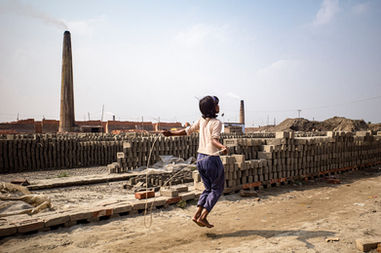
PICTORIAL STORY
August 16, 2024
FIRE AND FORGE
The Struggle of Sulfur Miners at Mount Ijen
Photography and story by Alexandros Zilos
Introduction by Melanie Meggs
In the captivating yet harsh landscape of Mount Ijen in East Java, Indonesia, the lives of sulfur miners reveal a narrative of resilience and determination. Alexandros Zilos, a documentary photographer, videographer, and video editor based in Athens, Greece, engages with this juxtaposition of beauty and hardship. With a camera in hand, Alexandros captures the interaction between man and nature, documenting the spirit of those who labor amidst toxic fumes and treacherous paths.
After completing his academic studies in Conservation Biology in Plymouth, United Kingdom, Alexandros began an extensive journey across three continents. Traveling by bicycle, he immersed himself in diverse natural environments and cultures, gaining a deep understanding of the lives and struggles of the people he encountered. Alexandros’s work focuses on environmental issues, human rights, and regional cultural realities.
Through his project “Sulfur Miners and Tourism at Mount Ijen,” Alexandros Zilos’s photographs depict the fascinating coexistence of tourism and labor in this volcanic region. Tourism has increased at Mount Ijen, drawing visitors to its sulfur mining operations and landscapes. This increase in visitors affects local communities and the environment, causing potential environmental degradation and disruptions in mining activities. The presence of tourists also influences local economic and cultural dynamics, as communities adjust to the demands and opportunities created by tourism. Alexandros delves deep into the harsh reality of sulfur mining, while also capturing the allure of the blue fire phenomenon created by sulfur deposits in the crater.
-min.jpg)
Mount Ijen is a stratovolcano located in East Java, Indonesia. Daily, hordes of tourists ascend its steep slopes to witness the captivating blue flames emanating from sulfur deposits. It is one of the few remaining active sulfur mines in the world. While its surreal landscapes have fascinated scientists and adventurers for over two centuries, in recent years, the miners themselves have emerged as a contentious tourist draw.
In the heart of this volcanic wonder, I observed a world where beauty and hardship intersect. Using my camera, I documented the daily struggles of the sulfur miners, their bodies bent under heavy burdens and their spirits tested by the harsh elements. Manually loading sulfur into their baskets, the miners laboriously carry their hefty loads on foot. Among clouds of toxic sulfur dioxide that cause immediate discomfort to their throats and eyes, the miners work tirelessly without adequate protection, with only a few possessing gas masks.
As I followed Dharma and his fellow miners on their ascent, I noted the scale of their labor. Carrying baskets and driven by determination, they navigated steep paths and dense jungles, their bodies covered in sweat and grime.
Formerly a seasoned miner, Dharma transitioned from working in the crater to becoming a tourism operator, demonstrating the enduring human spirit. He spent years learning English to leave behind the life of a miner and focus on tourism. He recounted to me his three-year stint, making the arduous journey two or three times a day. The mark on his shoulder shows the burdensome baskets used to transport sulfur. Dharma explained that most miners prefer working at night to avoid the daytime heat.
Despite their resilience, the miners remain at the mercy of forces beyond their control. Operated by a distant Chinese company, the mine lacks permanent staff and offers low wages and little in the way of protection or support. Miners decide their daily ascents up the 2769-meter volcano. On average, a miner can carry between 60 to 90 kilograms of sulfur at once, with some of the strongest shouldering over 100 kilograms.
The miners utilize primitive baskets connected by a yoke. The journey entails carrying the load up to 300 meters along a steep mountain path to the crater's edge. Then, they trek an additional three kilometers through the jungle to the collection point at Pos Paltuding. Each miner earns approximately $5 per trip, typically managing just two trips a day.
And yet, it remains one of the highest-paid occupations in the region, a stark reminder of the harsh realities faced by those who call Mount Ijen home.

In concluding this exploration of Mount Ijen, between the environment's beauty and the miners’ arduous labor. Alexandros Zilos’s photographs provides a profound look into the resilience and determination that define the daily lives of these workers.
With his background in Conservation Biology and extensive travels, Alexandros brings a unique perspective to his work. His images are more than visual records; they are powerful narratives. These narratives provoke thoughtful discussion on socio-economic dynamics and the preservation of cultural heritage. They prompt us to consider the human and environmental costs of the beauty we often take for granted. They challenge us to think critically about the untold stories and the lives that unfold far from the spotlight.
In the end, the sulfur miners of Mount Ijen have left a strong impression on our awareness. Alexandros Zilos’s work ensures their stories are seen and heard, a testament to the human spirit and the role of storytelling in bringing attention to less visible aspects of our world.

The views, thoughts, and opinions expressed in the text belong solely to the author/s, and are not necessarily shared by The Pictorial List and the team.









































